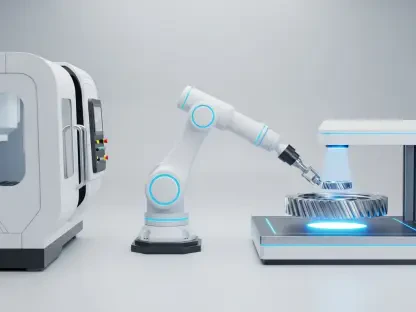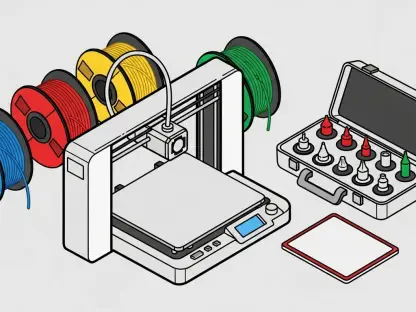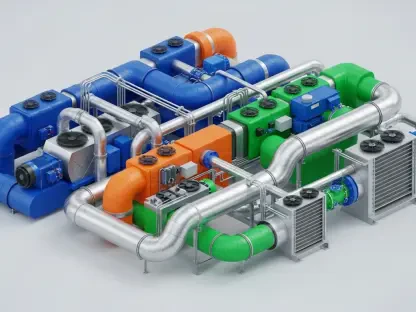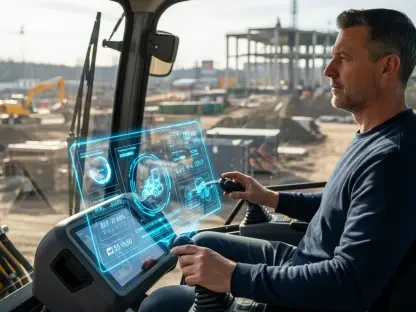Digital twins are setting the stage for an industrial revolution in manufacturing. These virtual replicas of physical assets—from individual machines to entire factories—provide a comprehensive view of real-world processes. This interconnected and data-rich representation is revolutionizing product development, predictive maintenance, and digital manufacturing. The importance of digital twins was highlighted at the recent virtual Design & Simulation Summit, which shed light on their numerous applications and benefits.
The Role of Digital Twins in Manufacturing
Enhancing Monitoring and Performance Optimization
Digital twins offer unparalleled insights into machine performance by replicating physical assets in a virtual environment. Companies can monitor these digital replicas to track performance metrics, predict maintenance needs, and foresee potential downtimes. This proactive approach ensures machines operate efficiently and reduces unexpected operational halts.
Creating a digital twin involves accurately mapping the physical asset and integrating data streams for real-time monitoring. This continuous flow of data allows for adjustments and optimizations, translating into higher productivity and reduced maintenance costs.
Real-World Applications and Case Studies
Teresa Alberts, CEO and founder of ITficient, highlighted numerous success stories at the summit. For example, a manufacturing plant using digital twins saw a 30% reduction in maintenance costs and a 20% increase in machinery lifespan. The virtual models enabled precise monitoring and early detection of issues, allowing for timely maintenance before breakdowns occurred.
Another case study focused on optimizing factory designs. Digital twins were used to simulate different layouts and configurations, identifying the most efficient design without costly physical trials. Companies reported significant time savings and increased overall efficiency by implementing the optimal design gleaned from these simulations.
Best Practices for Implementing Digital Twins
Assessing Organizational Needs and Creating a Proof of Concept
Before diving headfirst into digital twin technology, it’s crucial for companies to identify their specific needs. Whether the focus is on predictive maintenance, innovative service models, or enhancing digital manufacturing, understanding where the technology can provide the most value is essential.
Developing a proof of concept is the next step. This phase involves creating a small-scale digital twin project to validate the concept’s effectiveness. By starting small, companies can identify potential issues and make necessary adjustments before scaling up to full deployment. This iterative approach ensures the final system’s robustness and efficiency.
Scaling for Productive Use
Once validated, the digital twin should be scaled for widespread use within the organization. This step involves integrating it into various processes and ensuring seamless data flow across the enterprise. Companies that have successfully scaled digital twin technology report increased efficiency, reduced costs, and better decision-making capabilities.
However, scaling up is not without challenges. It requires a systematic approach to manage data integration and continuous monitoring to ensure the digital twin remains accurate and effective. Companies must be prepared to handle the increased complexity and data management needs that come with broader implementation.
Trends and Consensus in Digital Twin Adoption
From Futuristic Concept to Present-Day Necessity
Experts at the summit agreed that digital twins are no longer futuristic concepts but present-day necessities. Their ability to provide real-time, dynamic feedback on products and processes makes them indispensable for companies looking to stay competitive. By enabling virtual monitoring, adjustments, and optimizations, digital twins drive significant cost savings and efficiency improvements.
The consensus is clear: the broader adoption of digital twins is reshaping the industry. More companies are realizing the value in this technology and are investing in its development and integration. As a result, we can expect to see a continued increase in digital twin use cases across various manufacturing sectors.
Integration with the Digital Thread Concept
Digital twins play an integral role in the digital thread concept—an interconnected stream of data that spans the entire product lifecycle. This integration provides a cohesive, real-time understanding of product status, enabling continuous innovation and improvements. By linking design, manufacturing, and lifecycle management, digital twins help create more efficient and effective manufacturing processes.
The Design & Simulation Summit Insights
AI in Simulation and Personalized Workstations
Keynote speakers at the summit delved into the role of artificial intelligence in simulation. AI-powered simulations enhance the capabilities of digital twins, allowing for more accurate predictions and optimizations. This synergy between AI and digital twins opens new avenues for innovation and efficiency in manufacturing.
Another highlight was the discussion on configuring workstations for optimal performance. Panelists emphasized the importance of tailoring workstations to handle CAD and simulation software requirements, ensuring engineers and designers can work more efficiently. These configurations are crucial for maximizing the benefits of digital twins and enhancing overall productivity.
The Business Case for Simulation-Led Design
Presentations also made a compelling business case for adopting simulation-led design approaches. By incorporating simulations early in the design process, companies can identify potential issues and address them before physical prototypes are created. This method leads to significant cost reductions and superior design quality, making it an attractive approach for forward-thinking manufacturers.
Simulation-led design, supported by digital twins, ensures that each design iteration is informed by precise, real-time data. This approach accelerates the development process and results in better products. The summit showcased numerous examples of companies successfully implementing these.
Conclusion
Digital twins are spearheading a new era in manufacturing, acting as catalysts for an industrial revolution. These digital replicas of physical assets, from individual machinery to entire factories, offer an exhaustive overview of real-world operations. By creating a detailed, interconnected, and data-rich representation, they are transforming various aspects of the manufacturing sector, including product development, predictive maintenance, and digital manufacturing.
One significant advantage of digital twins is their ability to simulate real-world conditions and predict potential issues before they arise. This proactive approach not only saves time but also reduces costs associated with unscheduled downtime and repairs. Digital twins can optimize operational performance by providing insights that help refine manufacturing processes, elevate product quality, and ensure timely delivery.
The recent virtual Design & Simulation Summit underscored the growing importance of digital twins, showcasing their diverse applications and myriad benefits. As digital twin technology continues to evolve, its role in shaping the future of manufacturing becomes increasingly pivotal, heralding a more efficient and innovative industry landscape.









